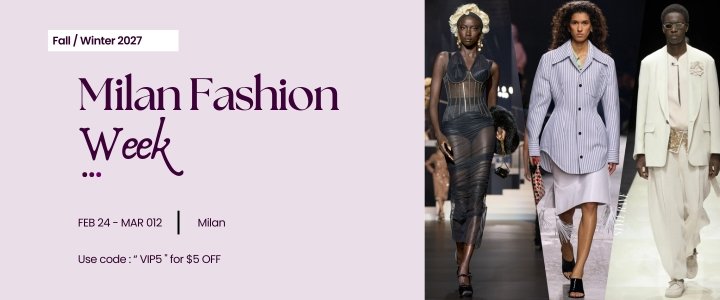When a fashion editor friend received a Gucci campaign alert on Tuesday evening, she did something unprecedented: she immediately opened the brand’s e-commerce app. Not to browse. Not to wishlist. But to buy—pieces she’d just watched onscreen moments earlier. “I’ve never felt this kind of urgency with luxury before,” she confessed. “It felt like dropping a limited-edition sneaker, except it’s a €4,000 sequined skirt.” This is precisely the disruption Demna is engineering at Gucci, and it represents the most radical restructuring of luxury retail in decades. By collapsing the traditional six-month gap between runway and register, Gucci is betting everything on a single, provocative hypothesis: that today’s luxury consumer craves immediacy more than anticipation. But in an industry built on carefully cultivated desire and seasonal scarcity, this gamble could either rewrite the rules of high fashion—or spectacularly backfire.
The Unconventional Debut
The appointment of Demna as Gucci’s new creative director has sent shockwaves through the fashion establishment, not merely because of who he is, but because of how he’s chosen to debut. His first collection, “La Famiglia,” launched during Milan Fashion Week through an unconventional short film titled The Tiger—directed by Spike Jonze and Halina Reijn, starring Demi Moore, Elliot Page, Keke Palmer, and Edward Norton—and arrived in stores almost simultaneously with its premiere. This see-now-buy-now format represents a fundamental challenge to luxury fashion’s most sacred ritual: the extended courtship between debut and delivery.
The Traditional Luxury Calendar
For nearly a century, luxury fashion has operated on a meticulously choreographed calendar. Designers present spring collections in September, fall collections in February, and retailers receive inventory four to six months later. This temporal architecture serves multiple strategic purposes: it allows buyers to place orders, gives magazines lead time for editorial coverage, and most critically, builds anticipation. The waiting period transforms desire into obsession, casual interest into commitment. It’s the difference between wanting something and needing it.
Demna is dismantling this entire edifice. His lookbook dropped one day before Milan Fashion Week commenced, offering a preview of his vision for Gucci. Then came the film premiere—styled deliberately as a Hollywood event rather than a fashion presentation, with models including Alex Consani, Lila Moss, and Delilah Belle walking the red carpet in pieces from the collection. Within hours, those same pieces appeared on Gucci’s website, ready for purchase. The traditional pilgrimage from runway to retail, once measured in seasons, has been compressed into a single evening.
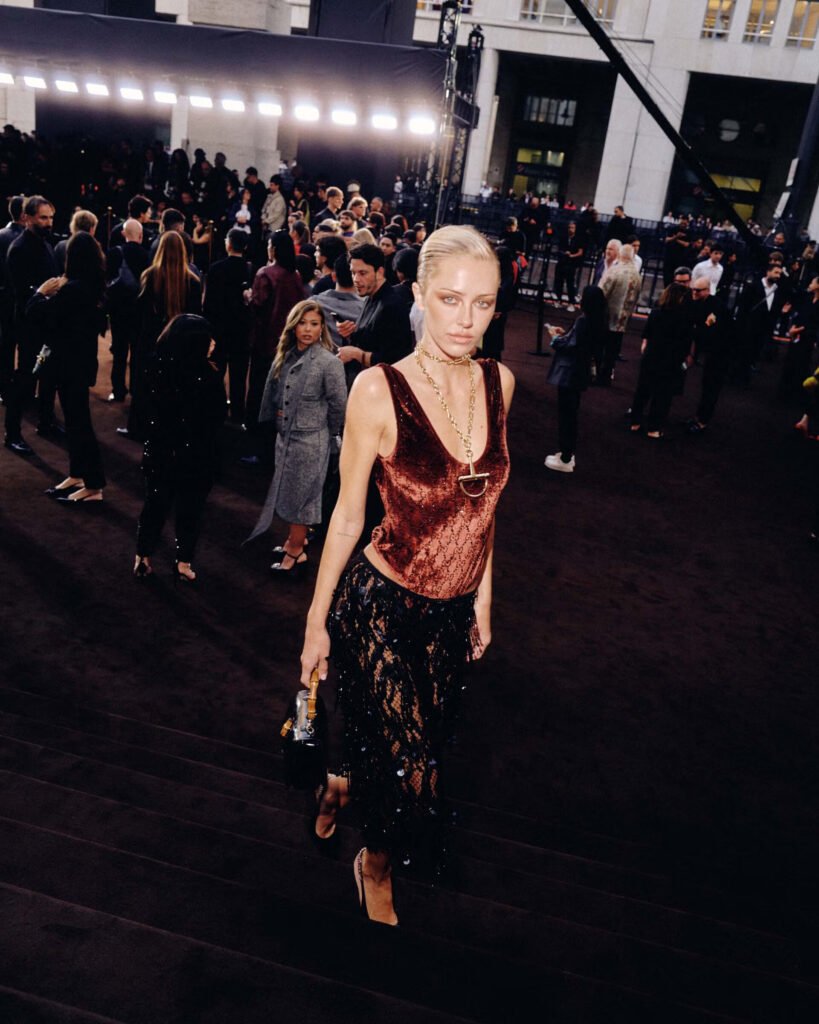
Previous Experiments and Failures
This acceleration is not without precedent. The see-now-buy-now model has tempted numerous luxury houses over the past decade, each attempting to reconcile the industry’s glacial pace with the internet’s instant gratification. Burberry experimented with immediate availability in 2016 under Christopher Bailey, allowing customers to purchase runway looks directly after the show. Tom Ford embraced the format enthusiastically, presenting collections and making them immediately shoppable. Tommy Hilfiger partnered with Gigi Hadid for see-now-buy-now spectacles that merged fashion show and retail event.
Yet nearly all these experiments eventually retreated to traditional timelines. Burberry abandoned the strategy in 2018, citing the immense operational strain and diminishing returns. The problem was multifaceted: production timelines became punishing, quality control suffered under compressed schedules, wholesale partners felt alienated by direct-to-consumer priority, and paradoxically, the excitement seemed to fade rather than intensify. When everything is available immediately, nothing feels particularly special.
Why Now? The Changing Landscape
So why would Demna—and by extension, Kering—resurrect a model that has repeatedly failed? The answer lies in fundamental shifts in both consumer behavior and luxury’s competitive landscape. Today’s ultra-high-net-worth individuals, particularly those under forty, have been conditioned by technology to expect immediacy. They book private jets on-demand, access exclusive experiences through concierge apps, and participate in real-time luxury markets from cryptocurrency to NFTs. The notion of waiting six months for a handbag feels increasingly anachronistic to this demographic, less like anticipation and more like inefficiency.
Moreover, the threat of knockoffs has intensified exponentially. Within hours of a runway show, fast-fashion retailers and counterfeit operations can analyze designs and begin production. By the time authentic pieces reach stores months later, the market is already saturated with approximations. See-now-buy-now eliminates this window, allowing Gucci to capture the initial wave of demand before imitations proliferate. It transforms temporal advantage into competitive weapon.

Supply Chain Revolution
The supply chain implications are staggering. Traditional luxury production involves elaborate choreography: fabric selection, sample creation, buyer orders, production planning, quality inspection, distribution, and finally retail placement. Compressing this into weeks rather than months requires complete operational transformation. Manufacturing partners must maintain unprecedented inventory of materials. Artisans must work in compressed timeframes without compromising craftsmanship. Distribution networks must pivot from bulk seasonal shipments to continuous, rapid fulfillment.
Industry insiders suggest that Demna’s success may depend on strategic selectivity. Rather than making entire collections immediately available, Gucci appears to be focusing on hero pieces—signature items with strong visual identity and broad appeal. The €4,000 sequined skirt, not the intricate hand-beaded gown that requires six weeks of atelier work. This approach allows the brand to deliver on the promise of immediacy while maintaining the craftsmanship standards that justify luxury pricing.
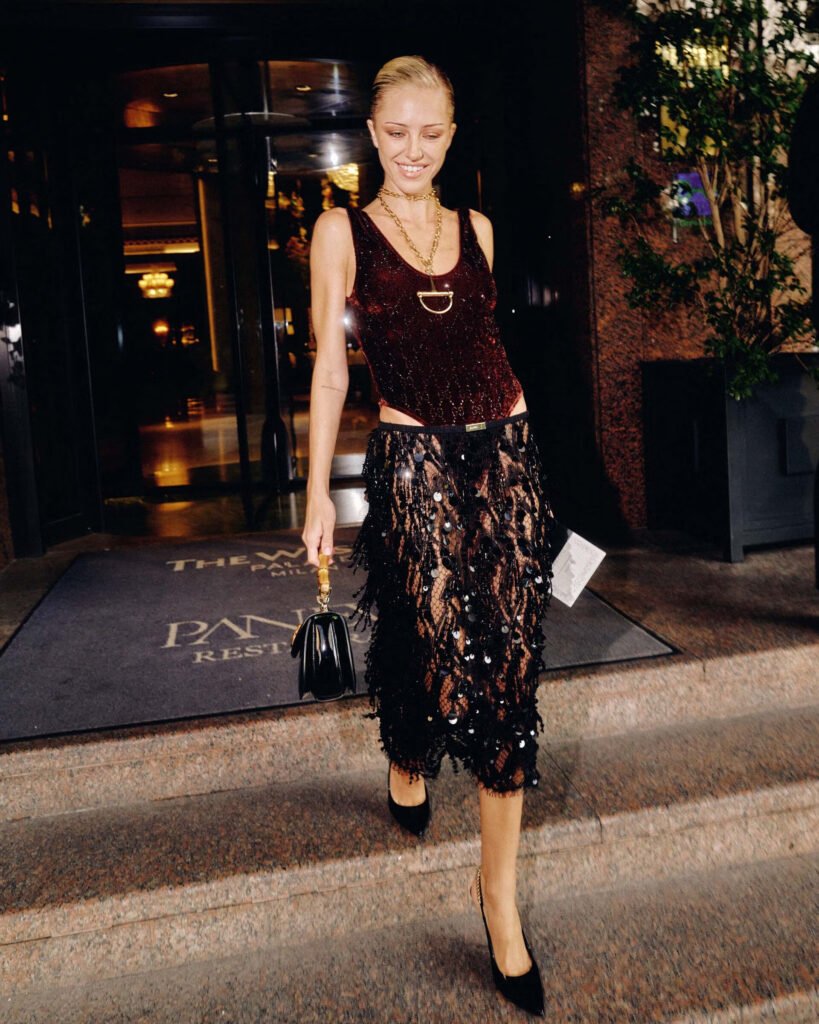
Financial Implications
The financial calculations are equally complex. See-now-buy-now eliminates traditional wholesale dynamics, where department stores and boutiques place advance orders that provide designers with crucial capital and sales projections. Without these pre-orders, brands assume significantly more inventory risk. They must manufacture based on projections rather than confirmed demand, potentially facing either stockouts that frustrate customers or overproduction that requires markdowns.
However, the model also offers compelling advantages. By maintaining tighter control over distribution and pricing, Gucci can protect margins that are typically sacrificed to wholesale partners. Direct-to-consumer sales through owned boutiques and e-commerce generate higher profits per item. The emotional intensity of simultaneous viewing and purchasing may also drive impulse buying among affluent consumers, converting casual interest into immediate transaction before rational consideration intervenes.
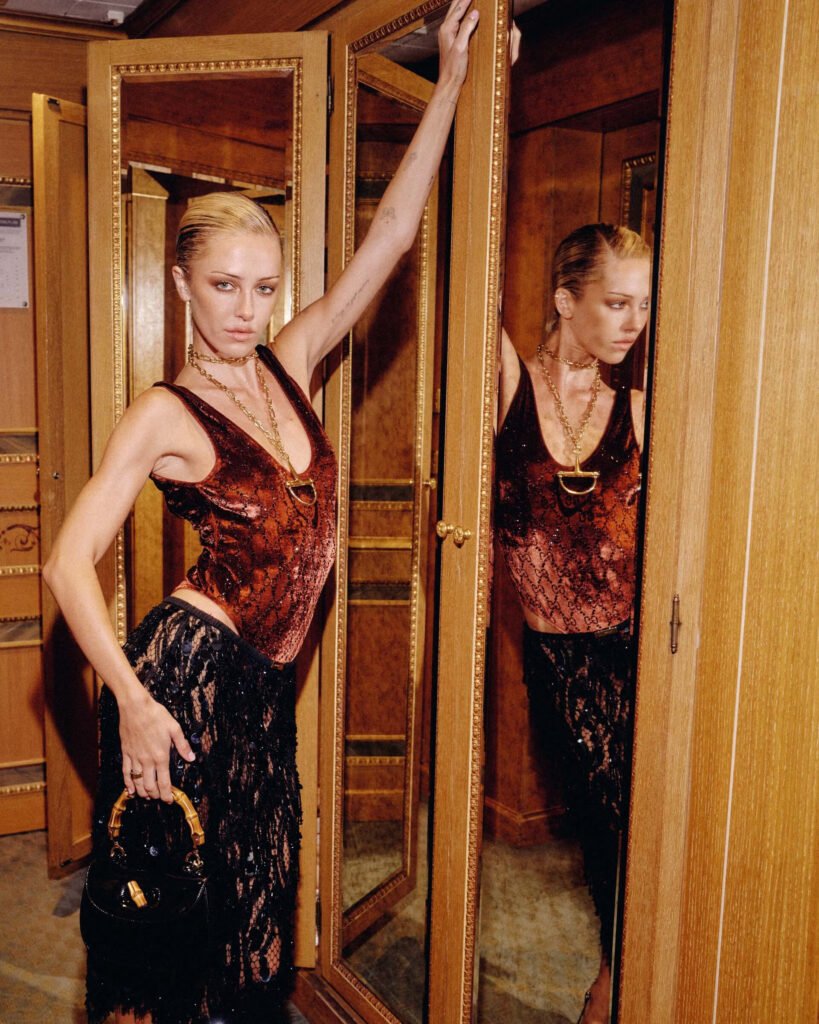
Demna’s Strategic Fit
Demna’s personal aesthetic evolution makes him a particularly intriguing choice for this experiment. His tenure at Balenciaga was defined by deliberate provocation—dystopian runways, controversial advertising, and a willingness to alienate traditional luxury consumers in pursuit of cultural relevance. At Vetements before that, he pioneered the high-low mashup that became streetwear’s defining characteristic. He understands viral moments, digital engagement, and how to generate conversation that transcends fashion media into mainstream culture.
Gucci desperately needs this energy. Despite its heritage prestige and iconic status, the house has struggled with creative direction and commercial momentum in recent years. Previous attempts at reinvention have felt tentative, caught between honoring founder Guccio Gucci’s legacy and appealing to contemporary tastes. Demna offers something Gucci hasn’t had in years: a clear, confident, unapologetic vision, backed by proven commercial instincts.
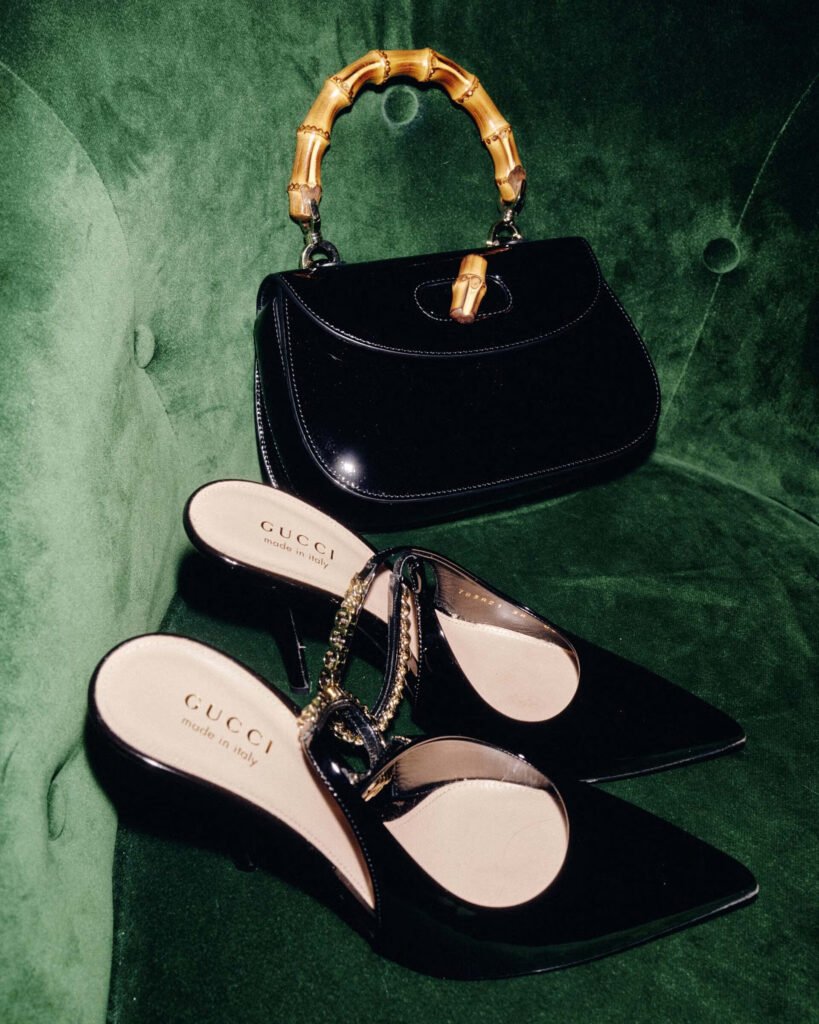
Content as Fashion Launch
The short film format for the debut further signals this strategic recalibration. By enlisting Spike Jonze and Halina Reijn—directors known for narrative sophistication—and casting established actors rather than professional models, Demna is positioning Gucci within entertainment and culture broadly, not merely fashion specifically. The Tiger functions as content, infinitely shareable and algorithmically friendly, designed to penetrate feeds and conversations far beyond industry insiders.
This represents a fundamental reimagining of what a fashion launch can be. Traditional runway shows speak primarily to trade audiences: buyers, editors, stylists, influencers. They’re industry events that the public glimpses through filtered media coverage. But a film premiere starring Demi Moore is a mainstream cultural moment. It generates celebrity magazine coverage, entertainment news segments, social media discourse. It reaches people who have never attended a fashion show and never will, but who might, impulsively, buy a piece they saw onscreen if it’s immediately available.

The Risks of Disruption
The risks remain substantial. Luxury fashion’s traditional calendar creates natural editorial cycles—fall previews in September magazines, spring features in February issues. This symbiotic relationship between brands and media sustains the industry’s visibility and cultural relevance. By disrupting this timeline, Gucci may find itself competing for attention against an overcrowded media landscape rather than benefiting from coordinated editorial support. Fashion editors plan issues months in advance; spontaneous launches complicate this process.
There’s also the question of brand equity erosion. Luxury has always depended on controlled scarcity and aspirational distance. Making products immediately available to anyone with sufficient funds and internet access potentially diminishes the exclusivity that justifies premium pricing. The traditional waiting period served as a soft filter, separating casual interest from genuine commitment, impulse from intention. Without this buffer, Gucci risks becoming just another e-commerce destination, distinguished by price but not by prestige.
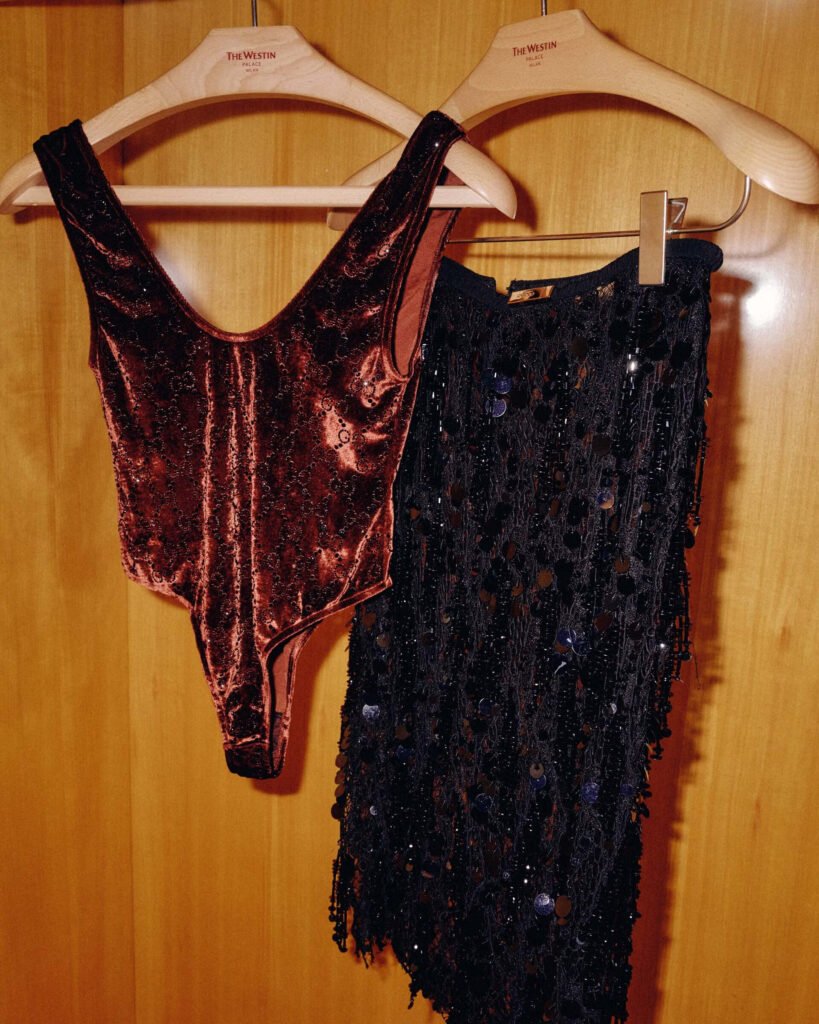
The New Luxury Psychology
Yet Demna seems to be betting that contemporary luxury consumers value access over exclusivity, experience over possession. They want to participate in cultural moments, not observe them from temporal distance. They want their purchases to feel immediate and relevant, connected to specific events and emotions, not abstract seasonal cycles. The €4,000 sequined skirt purchased the night of the film premiere carries different emotional weight than the same skirt purchased four months later in a boutique—it’s a souvenir of participation, proof of being present for a moment.
This psychological dimension may be see-now-buy-now’s most compelling advantage. In an era of infinite digital content and constant product availability, scarcity has become temporal rather than quantitative. The question isn’t whether something exists in limited quantities, but whether you acquired it during its moment of maximum cultural relevance. Drops, launches, releases—the language of contemporary retail emphasizes timing over rarity. Demna is applying this logic to ultra-luxury, testing whether haute couture can function like Supreme.

The Verdict Awaits
The coming months will reveal whether this gamble succeeds. Gucci’s first official runway show under Demna—scheduled for fall/winter 2026—will provide crucial data points. If “La Famiglia” performs commercially, validating the see-now-buy-now approach, expect the industry to reconsider its resistance. If sales disappoint or operational challenges prove insurmountable, it will reinforce the wisdom of traditional timelines and confirm that previous experiments failed for fundamental rather than incidental reasons.
What’s certain is that Demna has forced a conversation the luxury industry has been avoiding. Fashion’s traditional calendar was designed for a pre-internet era, when information moved slowly and patience was culturally normative. Today’s consumers live in a state of permanent impatience, trained by technology to expect instant delivery of everything from entertainment to transportation to food. Luxury fashion has insisted it’s different, that true quality requires time, that anticipation is part of the value proposition.
Demna is calling this bluff. He’s suggesting that luxury can be both immediate and exclusive, that craftsmanship can coexist with speed, that waiting isn’t sophistication but inconvenience. Whether he’s right will determine not just Gucci’s future, but potentially reshape how the entire luxury industry operates. The six-month wait between runway and retail may seem like an immutable tradition, but then again, so did the runway show itself—until Demna replaced it with a film premiere and proved that even fashion’s most sacred rituals are negotiable.
A Question of Power
In the end, this isn’t really about logistics or retail strategy. It’s about power—who controls the timing, the narrative, the transaction. For decades, luxury brands dictated when consumers could desire their products and when they could possess them. Demna is testing whether, in 2025, that power has shifted. Whether the consumer’s impulse now matters more than the brand’s timeline. Whether immediacy has become the ultimate luxury. The answer will reverberate far beyond Gucci, potentially rewriting the fundamental grammar of how luxury fashion speaks to its audience and when it allows them to respond.


